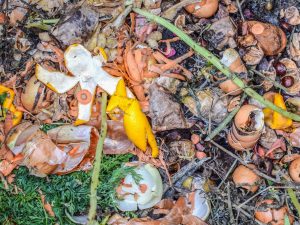Creating Your Own Watershed Moment
Creation, Creation CareContributed by: A Rocha
By Vance Ng, National Communications and Administrative Assistant
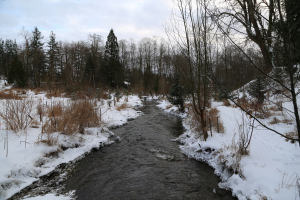
Looking down the river in the Little Campbell Watershed.
It being a new decade and a new year, I wonder about how I can push myself out of my own comfort zone and actively step into creation. At A Rocha, we bring our get-to-know-your-watershed perspective to our outdoor, living classroom experiences and to inform our conservation work.
The breadth of these questions were both eye-opening and sobering. However, it showed me that there are so many opportunities to learn too. All you have to do is look outside! With that in mind, here are some of the questions that I used to help me explore the Little Campbell Watershed:
1. Where does the recycling in your area go to?
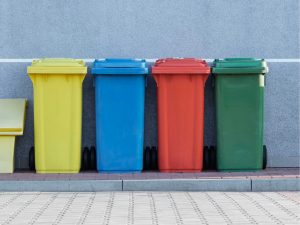
Our recycling gets picked up by Recycle BC and taken to a material recovery facility, where it is sorted and baled before being shipped to be processed into new raw materials. According to Recycle BC’s 2018 Annual Report:
- over 98% of plastics that are collected in BC stay in BC
- glass is shipped to Abbotsford to be made into new bottles and Quesnel to be made into sandblast materials
- metal containers are sold to end-markets* in BC, Ontario, and the US
- paper is sold to overseas end-markets* with some remaining in BC and the US.
*Organization for Economic Co-operation and Development (OECD) countries are prioritized for end-markets. Non-OECD countries are only marketed to if they meet or exceed the environmental, health, and safety standards equivalent to OECD standards.
What you can do:
Empty and rinse your containers before you put it in the recycling. Leftover foodstuff means contamination and less recyclable material.
Pre-sorting your materials in bags at home will make your depot trips easier. Try these categories: plastics bags and overwrap, foam packaging, other flexible plastic packaging. More details can be found at Recycle BC.
Ever wonder what can or cannot be recycled? Try the Recycle BC Waste Wizard or download the app!
2. How is organic waste managed in your area?
Organic waste is collected at the curb and is transported to the Surrey Biofuel Facility where it is processed into biofuel, compost, and liquid fertilizer.
For more information:
Did you know that soiled pizza boxes go in your organics bin and plastic bags do not? Refer to this (PDF) or your municipality’s organics guide for more information!
Interested in learning more about the biofuel process and anaerobic digestion? Book a tour!
3. What happens to wastewater in your area?
Wastewater in our area goes to the Annacis Island wastewater treatment plant where about 175 billion litres of wastewater is treated per year. Treated water is discharged into the Fraser River. Methane produced from the facility generates all the heat and about 50% of the electricity necessary to run the plant.
Tips to lessen the strain on your treatment system:
Remember to put only toilet paper or human waste down the toilet. Wipes and related products can clog sewers!
Avoid using garburators/garbage disposal units. Composting is a better alternative and puts less strain on the wastewater treatment system.
Wonder what happens when you flush? Check out this brochure (PDF).
4. Where does the electricity in your home come from?
98.4% of the power in our home comes from renewables, most of which comes from hydroelectric dams operated by BC Hydro.
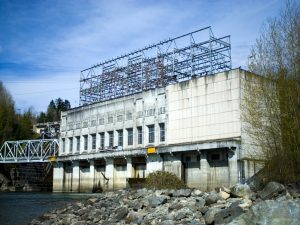
BC Hydro Ruskin Dam in Mission, BC.
Energy saving tips:
Check out 21 no-cost ways to save electricity from BC Hydro!
Income qualifying households can also apply for a free energy saving kit!
5. What direction do heavy rains or winter storms generally come from in your area?
Winter outflows from BC interior.

Soil erosion prevention tip:
Try creating a buffer of native plants! For example: sword fern, Douglas Fir, and red flowering current. For more suggestions, here are some from the Invasive Species Council of BC.
6. What plant growing locally is known for treating fever, colds, or respiratory ailments?
Devil’s Club.
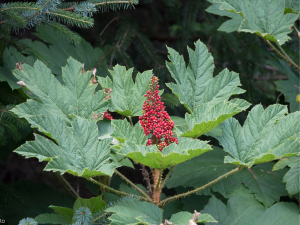
Devil’s Club. The inner bark is useful but mind the spines!
7. What plants in your area are poisonous?
Giant hogweed, water hemlock, spurge laurel.
Poisonous plant information:
Check out this page from WorkSafeBC.
The Canadian Biodiversity Information Facility also keeps a detailed database of poisonous plants.
8. List three types of edible berries of your area.
Salal, saskatoonberry, salmonberry.
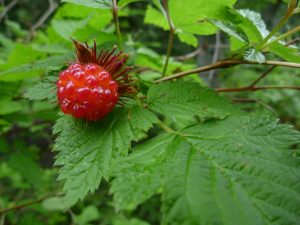
Salmonberry.
9. Name five native plants that are common in your area.
Red huckleberry, red flowering current, sword fern, red osier dogwood, vine maple.
Do you enjoy identifying plants?
Check out iNaturalist! You can contribute to biodiversity science and connect with naturalists online through their website or their apps on your iOS and Android devices!
Know your place:
If you haven’t taken the chance to get to know your place, consider embarking on this adventure. Whether through the twists and turns of the Internet, a gravel path, or your own backyard, this is the time to start something new!
Good Seed Sunday, our creation care initiative for churches, is also coming up April 26! May these questions be a fun way to explore your watershed and engage with creation in ways you never considered. Who knows? It could be a watershed moment for you! Share your stories using the hashtag #goodseedsunday!
Original article found at https://arocha.ca/creating-

